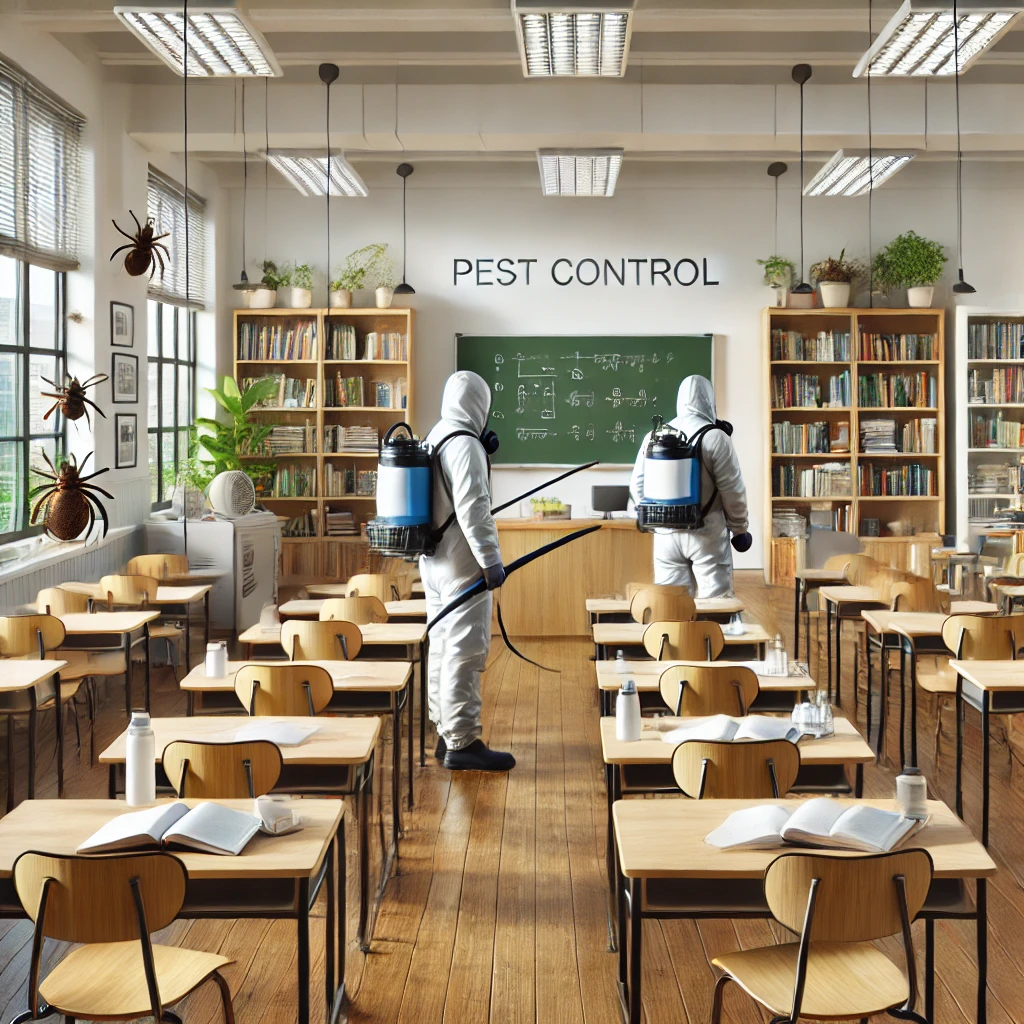
Introduction to Pest Control in Educational Spaces
Pest control in educational spaces is essential for creating safe and healthy environments conducive to learning. Schools, colleges, and universities are bustling hubs that bring together large numbers of students, teachers, and staff, often in close quarters. This dense population, combined with the presence of food, water, and shelter, can attract a variety of pests, including rodents, insects, and other nuisance wildlife. Effective pest management is crucial to protect the health and safety of everyone in these educational settings and to ensure that learning environments remain comfortable and distraction-free.
Health and Safety Risks of Pests in Schools
Pests in educational spaces pose significant health and safety risks. Rodents, for example, can spread diseases such as salmonella and hantavirus, contaminate food supplies, and damage property by gnawing on materials. Insects like cockroaches and ants can also contaminate food and surfaces, potentially causing allergic reactions and asthma in sensitive individuals. Additionally, pests such as bedbugs and lice can lead to discomfort and anxiety, disrupting the learning process. These risks make it essential for schools and other educational institutions to implement robust pest control measures to maintain a healthy learning environment.
Pest Management Strategies for Educational Institutions
To effectively manage pests in educational spaces, a combination of prevention, monitoring, and targeted control methods should be employed. Prevention strategies include maintaining clean facilities by promptly removing trash, food waste, and clutter that can attract pests. Sealing cracks and gaps in walls, windows, and doors helps prevent pests from entering the building. Regular monitoring and inspections by trained staff or pest control professionals can help detect early signs of infestation, allowing for prompt and targeted interventions. Non-toxic pest control methods, such as traps and natural repellents, are preferable in educational settings to minimize the risk of exposure to harmful chemicals for students and staff.
Challenges in Implementing Pest Control in Educational Settings
Implementing pest control in educational spaces presents several challenges. One of the primary challenges is ensuring that pest control methods are safe for children and do not disrupt the learning environment. The use of chemical pesticides can pose health risks, particularly to young children, who are more vulnerable to their effects. Additionally, the large and varied layout of educational facilities, which may include classrooms, cafeterias, libraries, and gymnasiums, requires a comprehensive and adaptable pest management plan. Budget constraints and the need for coordination among multiple stakeholders, including administrators, teachers, and parents, can also complicate pest control efforts.
Sustainable Approaches to Pest Control in Schools
To address these challenges, educational institutions are increasingly adopting sustainable pest control strategies. Integrated Pest Management (IPM) is a holistic approach that combines physical, biological, and chemical controls to manage pests in an environmentally friendly way. For example, schools can use physical barriers like door sweeps and window screens to keep pests out, employ biological controls such as beneficial insects to manage pest populations naturally, and use chemical treatments only as a last resort. By promoting education and awareness among students and staff about the importance of cleanliness and pest prevention, schools can foster a proactive culture of pest management that contributes to a healthier and more sustainable learning environment.
